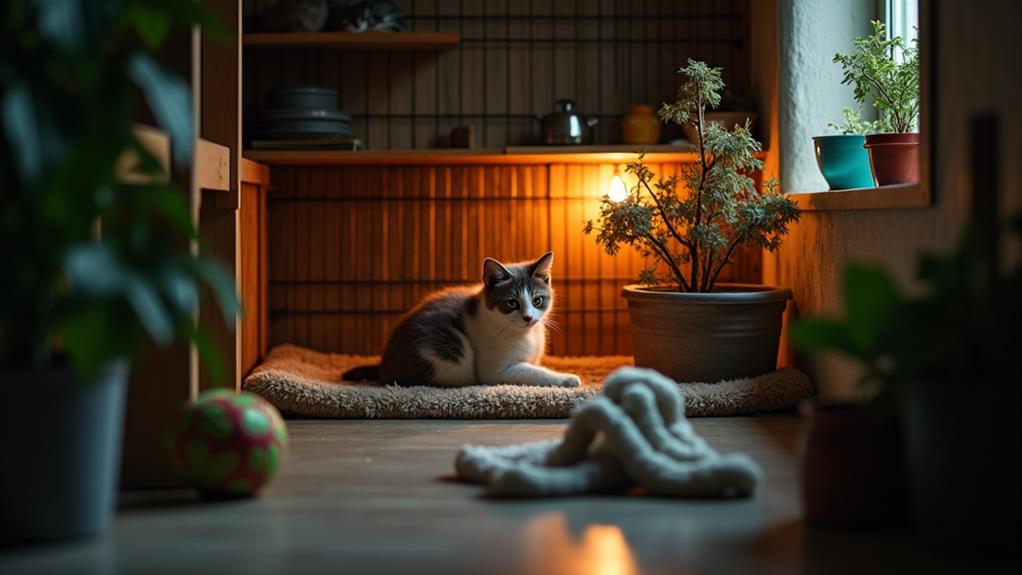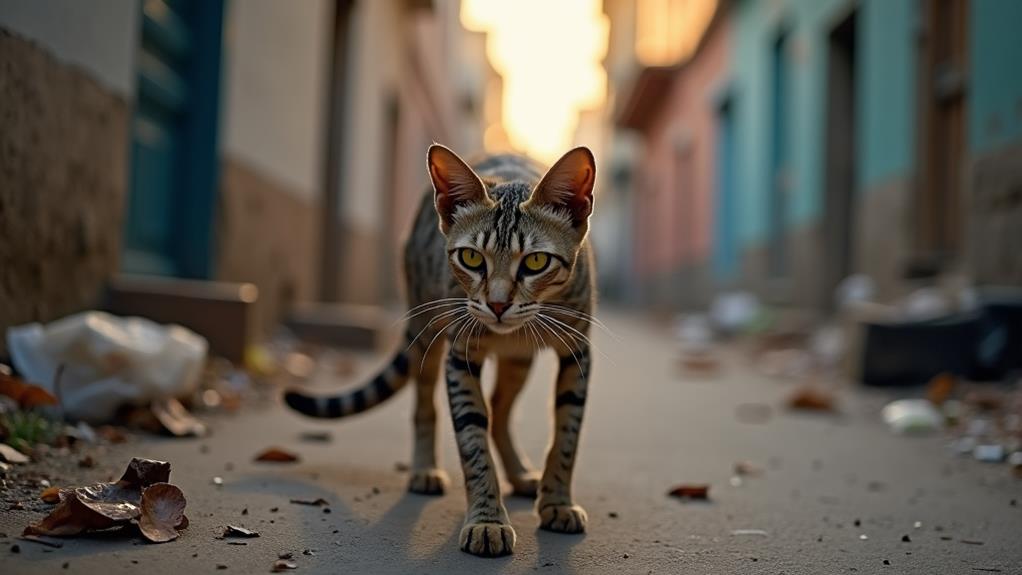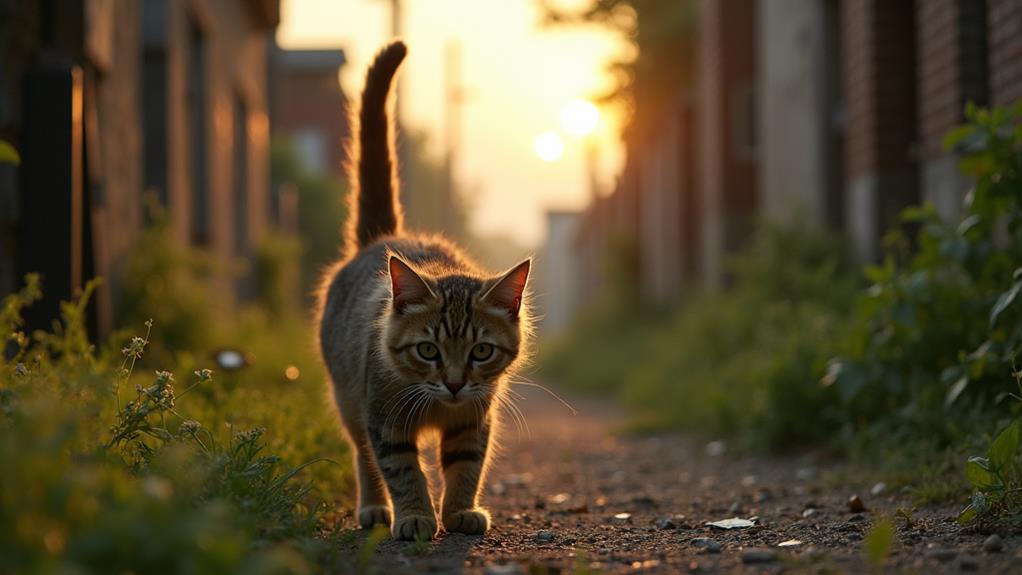How to Treat a Feral Cat for Fleas: Best Practices for Parasite Control
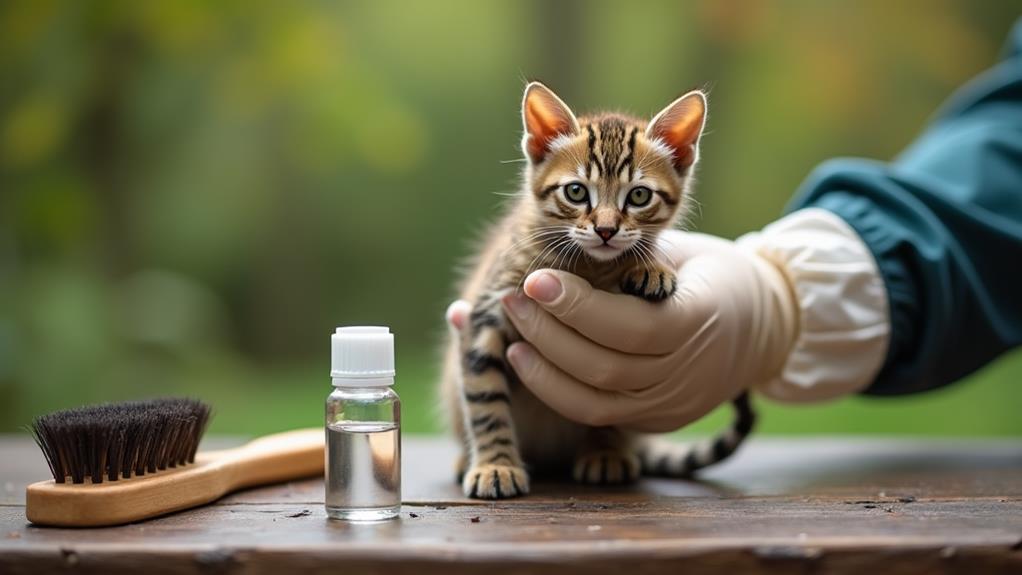
To treat a feral cat for fleas, start by safely capturing it with a humane trap, using food as bait. Calm the cat by covering the trap with a blanket. Use topical treatments like Advantage during neuter surgeries or oral meds such as CAPSTAR for tough situations. Maintain a clean environment, replacing bedding and using cat-safe sprays. Ascertain a nutritious diet to strengthen the cat's immune system. Monitor for infestation signs, and apply monthly treatments to disrupt the flea cycle. Engaging with these steps supports the cat's health, and you'll uncover more about effective long-term strategies next.
Understanding Feral Cat Flea Risks
Feral cats are constantly exposed to fleas, posing significant health risks, especially for vulnerable kittens. Flea infestations can transmit diseases and parasites like tapeworms, severely impacting their health. While healthy feral cats might handle minor infestations, heavy flea loads often signal deeper issues such as malnutrition or weakened immune systems. This makes it vital for you to understand the importance of flea treatment and general health care for these animals.
Implementing effective parasite control is fundamental in managing feral cat populations. By focusing on good nutrition and regular flea treatments, you can help bolster their immune systems, making them more resilient to flea infestations. Managed colonies with caretakers tend to fare better, as these cats receive consistent health monitoring and flea treatments. You should aim to implement topical flea treatments and environmental management to reduce flea risks effectively.
Understanding the risks associated with fleas in feral cats allows you to better address their health needs. By prioritizing nutrition and consistent parasite control, you're not only improving their immediate well-being but also contributing to the long-term health of feral cat populations.
Safe Capture and Handling
Capturing and handling feral cats safely is vital for both their well-being and yours. Begin by using humane traps specifically designed for feral cats to guarantee a safe capture. These traps help avoid injury and reduce stress, making the process smoother for the cat. Place the traps in quiet areas, away from high-traffic spots, where the cat feels more at ease. Using food as bait inside the trap increases your chances of a successful capture while minimizing anxiety.
Once the cat is captured, cover the trap with a blanket or towel. This simple step helps reduce visual stimuli, calming the cat during transport. It's important to handle the traps with care. Keep them steady to prevent the cat from panicking, escaping, or injuring itself. Remember, the key is to minimize stress at every stage.
After capturing the cat, limit direct handling. Instead, focus on providing a safe, comfortable space for treatment. By doing so, you not only guarantee the cat's safety but also make the entire process less traumatic for the animal. Following these best practices sets the foundation for effective flea treatment and comprehensive care.
Effective Flea Treatments
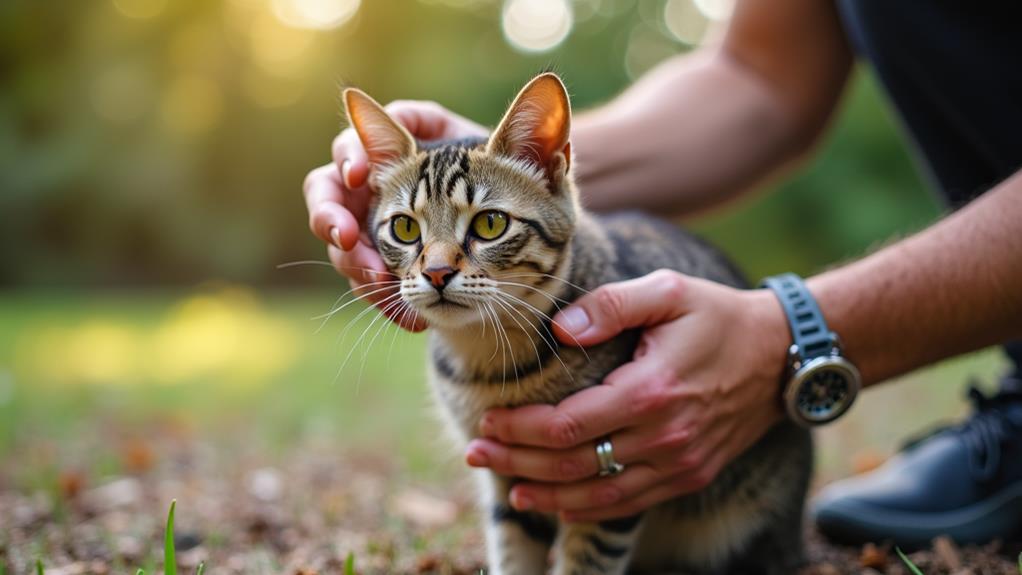
While capturing a feral cat is the initial step, treating them for fleas requires careful consideration of the most effective methods. Effective flea treatments are essential to manage flea infestations in feral cat populations. Topical flea treatments, such as Advantage, can be applied during neuter surgeries while the cats are under anesthesia. This provides immediate and effective protection against fleas, minimizing the risk of flea infestations.
For those feral cats that can't be handled easily, oral medications like CAPSTAR offer another solution. You can mix these with food, but be cautious with communal feeding to prevent overdosing. Consistent flea prevention is significant since feral cats often act as reservoirs for fleas, posing health risks to other felines.
Maintaining a clean environment also plays a big role in flea prevention. Regularly change shelter bedding at least twice a year and use cat-safe flea sprays to diminish flea populations. You might also consider natural deterrents like food-grade diatomaceous earth and dried pyrethrum under bedding as a preventative measure. Ultimately, guarantee the cats receive good nutrition, as a healthy diet supports their immune system, making them less susceptible to flea infestations.
Monitoring and Follow-Up Care
After choosing and implementing effective flea treatments, it's important to keep an eye on the ongoing health of the feral cats. Regular monitoring for signs of flea infestations, like excessive scratching or flea dirt, guarantees the treatment's effectiveness. If you notice these signs, adjust your approach as needed. Follow-up care involves re-treating the cats monthly to break the flea life cycle, especially in areas prone to reinfestation.
Observe the cats' general health and body condition post-treatment. Sometimes, malnutrition can make flea infestations worse, signaling the need for supplementary care. Addressing nutritional issues can improve their resilience against fleas. Keep in mind that communal feeding practices should not interfere with oral flea medications. Verify proper dosing for effective results, as inconsistent administration can lead to treatment failure.
Documenting your treatment and monitoring efforts is fundamental. This practice not only helps manage flea control strategies but also highlights patterns of reinfestation within feral cat colonies. By maintaining detailed records, you can identify when and where these issues occur, allowing you to adjust your strategies accordingly. Consistent monitoring and follow-up care are crucial for maintaining the health of feral cats and controlling fleas effectively.
Long-Term Prevention Strategies
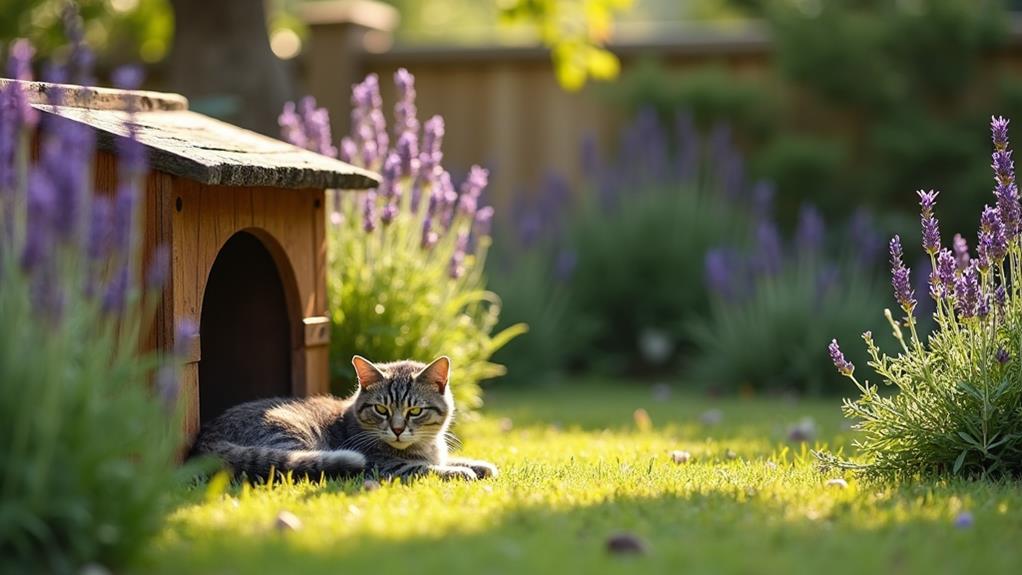
Implementing long-term prevention strategies is vital for maintaining a flea-free environment in feral cat colonies. Start by regularly administering monthly flea prevention products like topical treatments or oral medications. These proven methods can greatly reduce flea infestations and protect the health of feral cats. Furthermore, providing a consistent feeding schedule with high-quality cat food enhances their general health and immune response, making them less vulnerable to fleas.
Incorporating natural insecticides is another effective strategy. Use food-grade diatomaceous earth and beneficial nematodes in outdoor areas where feral cats live. These substances create a less hospitable environment for fleas, contributing to long-term prevention. Community involvement is also fundamental. Encourage your neighbors and other caretakers to maintain clean living spaces by reducing debris and potential flea habitats. This collaborative effort can help lower flea populations considerably.
Educating caretakers on identifying early signs of flea infestations allows for quick intervention and treatment, preventing severe health issues for feral cats. By combining these strategies—monthly treatments, quality cat food, natural insecticides, and community support—you'll establish a strong defense against fleas, ensuring healthier lives for feral cats in your care.

